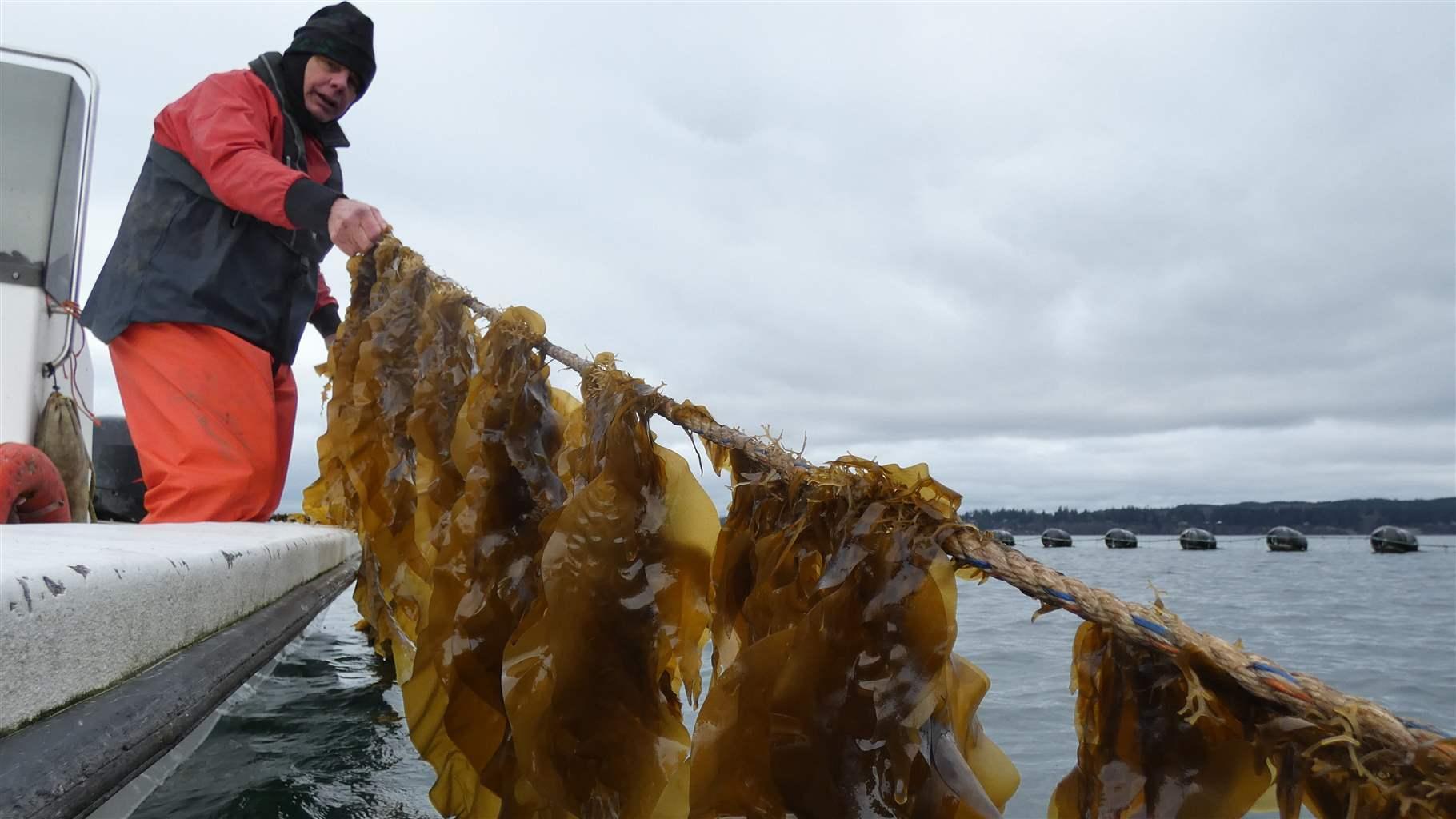
Aquaculture also faces some environmental opposition to the farming of net-penned fish. Opponents point to cases where nonnative fish species have escaped from fish farms, leading to concerns that they could outcompete native fish, spread disease or weaken the gene pool of wild stocks. They also point out the waste from penned-up fish increases nutrient loads in coastal waters.
“If you have regular escapes or large escapes, you're changing the ecosystem, and we don't know if that's repairable,” said Marianne Cufone, founder of the Recirculating Farms Coalition, which promotes the use of recycled water to grow food. Cufone’s land-based farm in Louisiana produces catfish and other species on an aquaponic system, which she said is a more sustainable model.
Supporters of ocean-based fish farming acknowledge there have been some poorly run operations, but they say that better species awareness, improved gear, sustainable feed and smart siting locations can reduce the risk of environmental harm.
‘Let us be the stewards’
Ocean farmers note that many Indigenous peoples have cultivated and harvested coastal resources for millennia. In Hawaii, islanders built distinctive rock-walled fishponds in tidal areas that contributed greatly to local food supplies.
In more recent years, Hawaiians seeking to restore historic ponds found that their cultural practice was now blocked by an overwhelming regulatory system. Locals working to restore one pond site spent 20 years trying to obtain the 17 different permits they needed.
“They had the community support, they had the grants, they had everything, and they just couldn't get through the process,” said Michael Cain, acting administrator of the state Office of Conservation and Coastal Lands.
In 2011, Cain joined a team of state regulators tasked with streamlining that process, creating a single statewide permit to encompass much of the previous paperwork. Permits now are issued in about 17 days, he said.
“The permitting process was so onerous and expensive that many folks just didn't want to start,” said Brenda Asuncion, who leads fishpond restoration efforts with Kuaʻāina Ulu ‘Auamo, a community group focused on island ecosystems and culture. “[The changes] have really helped to facilitate people doing restoration work.”
Asuncion’s group has about 60 fishponds in its network in various stages of restoration.
In Alaska, tribal peoples have long used kelp to harvest herring spawn, supplement meals and make nutrient cakes. The Native Conservancy, a Cordova-based, Indigenous-led land conservancy, is aiming to foster 100 Native-owned kelp farms over 2,000 acres of ocean within 10 years.
“A lot of people have left the villages because they just can't make a living,” said Dune Lankard, the group’s president and founder. “We hope this industry will help relocalize individuals that were lost to the seafood industry.”
The Native Conservancy has helped seven private kelp farmers procure permits, and it has also set up a commercial farm and nine test sites of its own. The group is supporting another 10 farmers who are seeking permits.
Lankard said state officials should give priority to tribes and Native people seeking to restore traditional cultural practices. He cautioned that the fast-growing industry could create another “land rush,” in which large corporations from out of state build massive farms in the waters surrounding Native villages.
“Honor the Indigenous people's right to the land and ocean near them,” he said. “Let us be the stewards and guardians that we're capable of being.”
This story was originally published by Stateline, an initiative of The Pew Charitable Trusts, on March 7, 2022.
"difficult" - Google News
March 29, 2022 at 07:01PM
https://ift.tt/91GIW5B
WA seaweed farming could boom but permitting remains difficult - Crosscut
"difficult" - Google News
https://ift.tt/CgHpLd8
https://ift.tt/PTDsV47
Bagikan Berita Ini














0 Response to "WA seaweed farming could boom but permitting remains difficult - Crosscut"
Post a Comment